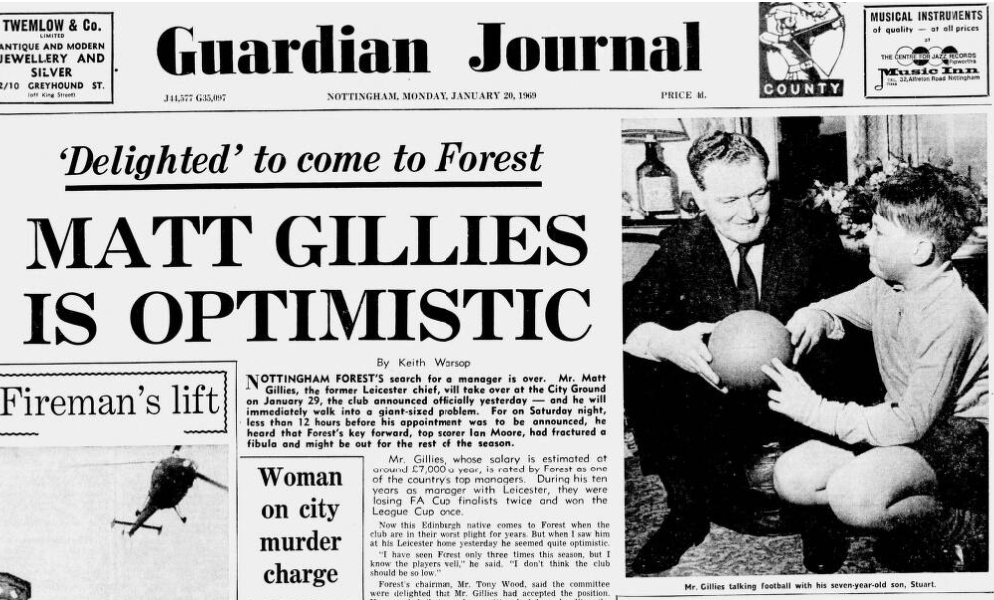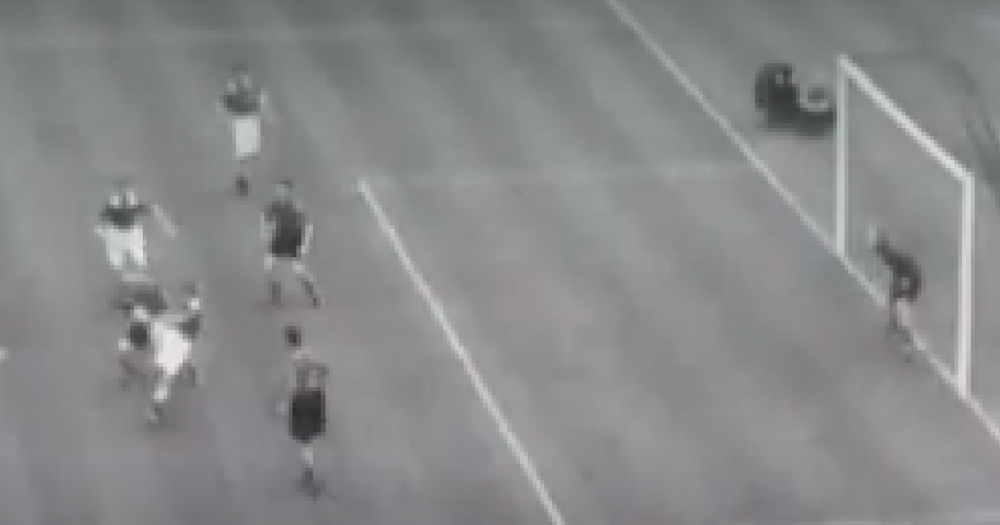We've been involved in a few relegation fights with Forest over the years, and while the precedents are not all positive, there are some remarkable stories to be told.
Let's have a look back over 100+ years of history.
1) 1908/09
After our first promotion in 1908, we only lasted one year in the top flight. But as we were plummeting towards Division Two that season, there was one thing easing the pain ever so slightly - and that was the prospect of taking Forest down with us.
This was the bottom of Division One on April 20th:
It was a 38 game season, so we were dead and buried. With two clubs going down, Forest were sitting perilously, just above the line with two to play. And their next game was - at home to Leicester Fosse.
What a great opportunity to salvage some pride and dent Forest's survival chances.
Sadly, it didn't turn out like that. Forest scored in the 5th, 8th, 11th and 14th minutes.
By half time it was 8-0.
The final score was 12-0. The worst defeat in the history of the club - a record that still stands.
Football News reported that: Forest were allowed to crowd around the goal almost as much as they liked. The backs and half-backs made hardly any attempt to stop them.
The Leicester Daily Post said: Time after time, when a judicious charge by a Fosse defender would have dispersed danger, that charge was not made.
Absolutely no blame was attached to our keeper - England international Horace Bailey, without whom, reports said, the score would have been 20-0 or worse.
It's an extraordinary scene to imagine - our defenders wandering round in a daze, doing nothing as Forest banged in goal after goal.
There was a reason for this - the day before the game, the Fosse players had attended the wedding of ex-teammate 'Leggy' Turner, and had clearly celebrated the occasion a little too freely. At least, that was the excuse the players gave to an FA inquiry into the result that was held shortly afterwards.
Forest stayed up, but only for two more years. In 1911 they would join us in Division Two, which is where the next chapter unfolded...
2) 1913/14
There was a time when Football League clubs could suffer a fate even worse than relegation - you could be kicked out of the League altogether. The bottom clubs had to apply for re-election, and if you failed, there was no National League there to catch you - no pyramid structure to cushion the fall. Some clubs simply went out of business completely. That's what happened to Fosse's great rivals Loughborough just a few years before.
The table below is perhaps the most remarkable in the history of the Leicester - Forest rivalry. It shows the two clubs propping up the whole Football League:
There were just two divisions then, but both clubs faced the prospect of the dreaded re-election vote with just three games each left to play.
Our next fixture was the key - at home to Lincoln, the third team in danger. We won that 2-0, and then a draw at Bury saw us move above the Imps on goal average.
Forest, though, were adrift, and the team that had won the FA Cup only 16 years earlier had to go through the humiliating process of pleading their case at the League's AGM.
The memory of that Cup win must have played its part in Forest getting comfortably re-elected - they got 34 votes, Lincoln also surviving with 24. Stoke's 16 votes was the highest of those applying to join the League.
3) 1914/15
Just a few days after that vote, the results of another application process were announced. Stoke, hoping to go one better next time, had advertised for a new manager, and out of 130 applicants, the winner was a Scotsman called Peter Hodge, previously at Hearts, and later to become arguably Leicester City's greatest ever boss.
The Football League season that followed was a surreal affair, played out to a backdrop of slaughter across the Channel, the games continuing even as tens of thousands lost their lives in the early months of the Great War.
The Football League said that the continuing Saturday fixtures gave people some release from the thoughts of the horrors over the sea and the bleakness of daily life in wartime.
Not that fans of Fosse and Forest were getting much solace. Once again, the two clubs were involved in a fight to avoid the re-election zone.
In the end, the previous season's positions were reversed and it was our turn to plead our case at the League AGM.
Thankfully, we cruised home with 33 votes, just one fewer than Forest the year before. Glossop were not so lucky - the club was in a mess financially and they received just a single vote, allowing Peter Hodge's Stoke to win a place in the Football League.
Our last game that season had been a 2-0 defeat at Clapton Orient - and that fixture was the last ever played by Leicester Fosse. The Football League finally decided to suspend the competition, and when things resumed after the war, a whole new club was occupying Filbert Street. This was Leicester City Football Club, and just a few weeks into its existence, Peter Hodge quit his job at Stoke to join us.
4) 1948/49
Hodge took us to our first Cup semi-final in 1934, then the man he discovered, Johnny Duncan, went one better in 1949.
Look at this freeze frame:
It's one of the most controversial moments in our history.
2-1 down to Wolves in our first Cup Final, Mal Griffiths hooks the ball through to Ken Chisholm (top of picture). He then shot past the Wolves keeper to equalize. But the linesman's flag went up and the goal was ruled out for offside. Wolves soon went up the other end and made it 3-1.
The picture shows just how close a call it was. A 1940s version of VAR might have allowed the goal to stand, and the game could have finished 2-2.
But that would have presented a huge scheduling problem.
In the League, we were involved in a fight with Forest at the bottom of Division Two. On Cup Final Day, Forest were in London too. They got a sensational 5-0 win at Upton Park which left the table looking like this:
It was still two up - two down, and with Forest's goal average being much better, we knew we needed three points from our remaining three games to be sure of staying up. And those three games had to be played within the space of only four days in the week after the Cup Final, like this:
Wednesday: Bury (a)
Thursday: West Brom (h)
Saturday: Cardiff (h)
Now if the Cup Final had been drawn, the replay would have been on Wednesday at Villa Park, with the Bury game switched to the Friday. This would have meant a quite unbelievable sequence of four games in four days:
Wednesday: FA Cup Final Replay v Wolves
Thursday: League game v Bury (a)
Friday: League game v West Brom (h)
Saturday: League game v Cardiff (a)
In this alternative history, we might have become the first club to win the Cup and be relegated to Division Three in the same season. It's hard to imagine we could have got the necessary League points straight after the exertions of a replayed final.
The real story, of course, had a different kind of bitter-sweet conclusion. We lost the Cup Final but captured the nation's hearts (no club so low in the League had ever reached a Wembley Cup Final) - we then won at Bury, and after losing to West Brom, got the point at Cardiff that kept us up and sent Forest down, with even the Cardiff fans cheering Jack Lee's equalizer.
5) 1968/69
On January 18th 1969, new Leicester boss Frank O'Farrell took his team to the City Ground for a crucial relegation four pointer.
He had taken over when Matt Gillies' ten year reign at the club ended a month earlier.
The game finished Forest 0 Leicester 0, which left the bottom of Division One like this (still just two clubs going down):
The biggest talking point at the City Ground that Saturday evening, however, was neither the match, nor the League table. The news was breaking that Forest were about to appoint a new manager themselves - and it was none other than Matt Gillies, just weeks after quitting Filbert Street.
This was the Nottingham Guardian on the Monday:

Forest had heard that Man U had their eye on Gillies to step into Matt Busby's shoes when he retired at the end of the season . So they moved quickly to offer him the job.
For Leicester the remainder of the season was another story of a dramatic FA Cup run combined with a fight against the drop. This time, we lost out on both counts, while Forest, already out of the Cup, picked up points steadily in the League under Gillies' leadership and finished the season in 18th place, three points above us in 21st (though it wasn't long before we were back up and they were back down).
So that's the past - and totting up the historical score it looks like Forest are 3-2 ahead.
But you'll notice a pattern emerging:
1909 Forest
1914 Leicester
1915 Forest
1949 Leicester
1969 Forest
2023 __________
Come on lads, time to level it up.








Recommended Comments
Join the conversation
You can post now and register later. If you have an account, sign in now to post with your account.
Note: Your post will require moderator approval before it will be visible.